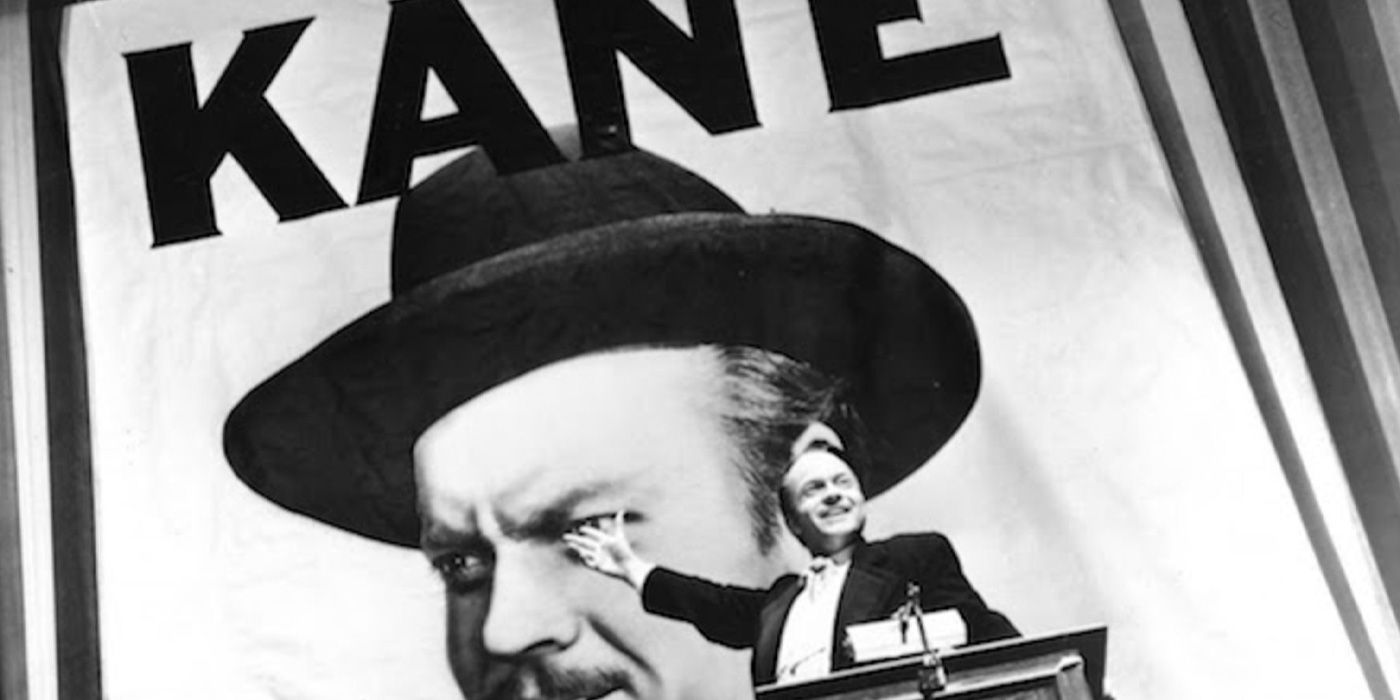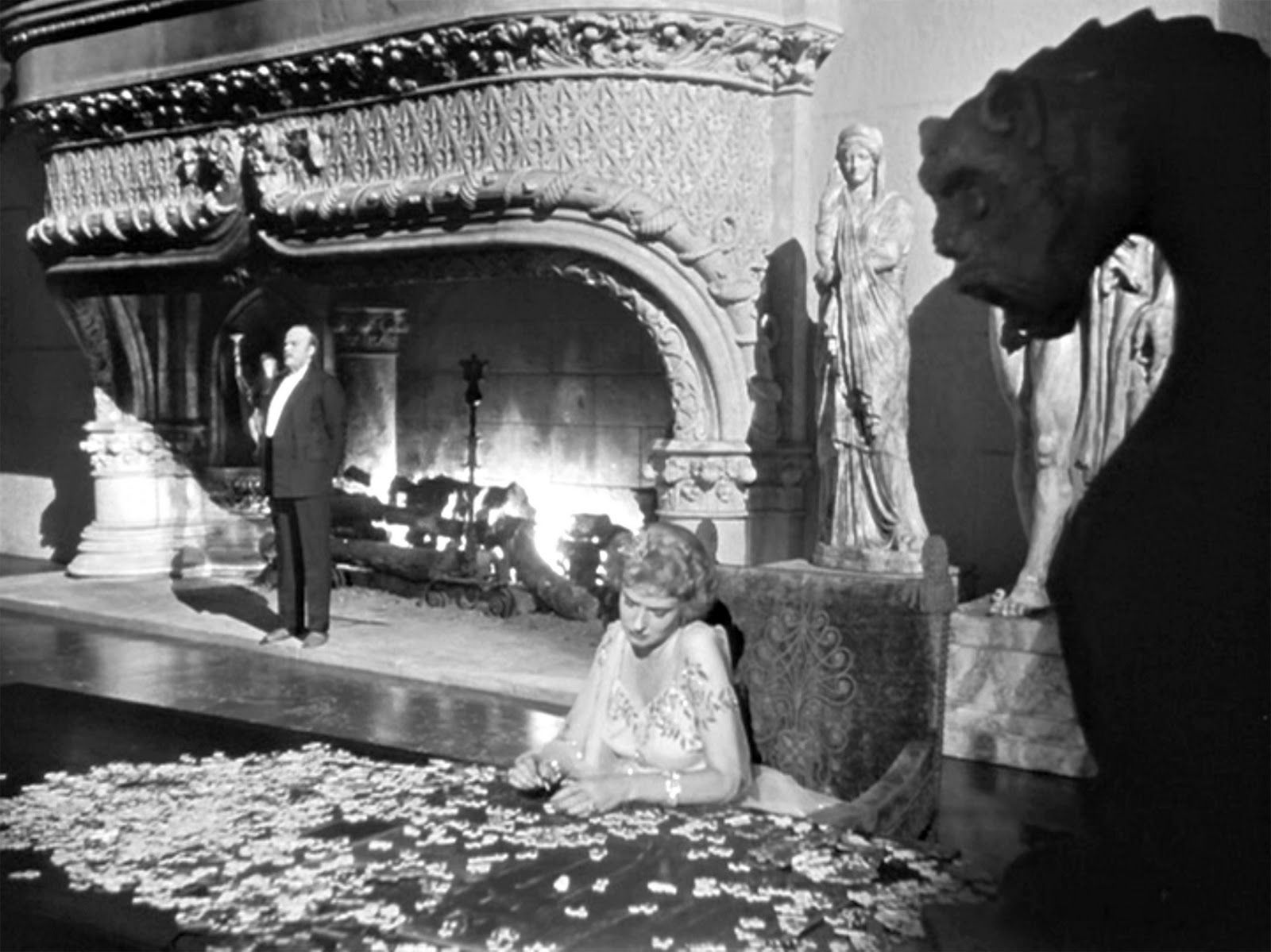If you’ve never seen Citizen Kane, you may still enjoy Mank, David Fincher’s film about the creation of Citizen Kane. You’ll still understand the plot beats and character arcs surrounding writer Herman Mankiewicz and how he came to write the screenplay for Citizen Kane. But if you want the full experience of Fincher’s movie, you’ll need to familiarize yourself with Orson Welles’ 1941 drama, not just because of its plot, but because of the way it’s photographed and how the themes work in sync with Mank. Fincher’s movie isn’t so much a prequel (it focuses primarily on Mankiewicz and largely leaves out Welles) as much as it’s a sibling that exists in conversation with Kane.
Even if you’ve never seen Citizen Kane, you may be marginally aware of its plot. You may remember that it was unofficially based off the life of publisher William Randolph Hearst, and that Welles’ striking cinematography was groundbreaking and helped draw the viewer into the dark psychology and competing personalities at play in the tragic story of newspaper magnate Charles Foster Kane (played by Welles). You might also know that the fabled “Rosebud” is Kane’s sled, a symbol of his childhood innocence which was robbed from him when the young Charles was essentially given away by his mother so that he could be raised wealthy and powerful.
Watching Mank, it’s clear that Citizen Kane itself is the Rosebud of Fincher’s film. It hangs over the entire picture, unspoken but inevitable and haunting. Like the unnamed reporter in Citizen Kane, Mankiewicz is searching for the screenplay of Citizen Kane as a kind of payoff, weak as it may be. It’s an object of salvation that he can create for his sins in playing court jester to a man like William Randolph Hearst who manipulates the media to his personal ends. Yes, the Kane screenplay is a kind of vendetta, but it’s also a statement of purpose that writing can be more than just a tool of the venal and the grotesquely powerful.
You’ll also have a better understanding of the real-world parallels that Mankiewicz used in writing the screenplays. The big one is that Charles Foster Kane is William Randolph Hearst, but beyond that you have Marion Davies as the inspiration for Susan Alexander Kane, and sycophantic studio head Louis B. Mayer as Kane’s enabling cohort Bernstein. These characters aren’t 1-to-1 (even Mank in Mank tries to stress that Susan Alexander is more inspired by how Davies is perceived rather than who she actually is), but they do provide good context for how these real-world figures are drawn in cinema both by Welles and later Fincher.
The way Mankiewicz is heading towards Kane is brilliantly rendered by having his writing scenes strongly mirror the cinematography used in Welles’ film. It’s as if Citizen Kane is coming into view through the “deep focus” cinematography Welles employed in his picture, and while Fincher largely avoids mirroring particularly shots from the 1941 drama (save for one or two specific nods), he undeniably echoes Welles’ movie in these scenes. You can see that contrasted against the rest of the movie, which is still handsomely photographed, but don’t look as much like the stark contrasts presented by Citizen Kane.
If you’re not familiar with Citizen Kane or if you haven’t seen it in a while, this kind of detail will be lost. Again, the films exist in conversation with each other, and while Welles is at the center of his movie not only as the director but also as the star, Mank counters by showing that there was, like the plot of Kane, a story behind the story. Whereas Citizen Kane starts off with news footage that provides a story that’s not the full picture of its subject, Mank argues that Citizen Kane is not the full story of how this towering cinematic classic came into being. It was not simply “the auteur”, and while Welles’ work was important, Mankiewicz deserves credit despite his many personal flaws.
Given Kane’s reputation, you may feel that its “classic” status means the film is dry, boring, and self-important, but that could not be further from the truth. Welles’ film endures in part because it has something to say about the American Dream and how our values are constantly misplaced, all rendered with electric performances, dialogue, and cinematography. You should see Citizen Kane not just because you’ll have a greater appreciation of Mank or because it’s an influential classic. You should see it because, as the original poster for Citizen Kane exclaimed, “It’s terrific!”
Citizen Kane is currently streaming on HBO Max.


